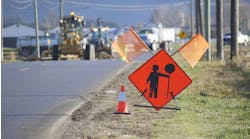The latest report on traffic fatality estimates were released yesterday by the National Safety Council, a nonprofit organization that works closely with federal auto-safety regulators. According to its estimates, 40,200 people died in accidents involving motor vehicles in 2016, a 6% rise from the year before.
If the estimates are confirmed, it will be the first time since 2007 that more than 40,000 people have died in motor-vehicle accidents in a single year. The 2016 total comes after a 7% rise in 2015 and means the two-year increase of 14% is the largest in more than a half a century.
Part of the increase is believed to stem from the improving economy, which has led Americans to drive more miles for both work and pleasure. But safety advocates say that explains only part of the trend because the number of deaths as a percentage of miles driven is also increasing. They also point to data suggesting an increase in distracted driving. Government officials and safety advocates contend, however, that more than anything else, the increase in deaths has been caused by more lenient enforcement of seatbelt, drunken driving and speeding regulations by authorities and a reluctance by lawmakers to pass more restrictive measures.
A patchwork of state laws leaves many areas where drivers can choose not to buckle up, with little likelihood of being stopped. Only 18 states have laws requiring seatbelts for both front and rear occupants, and categorize not wearing them as a primary offense—meaning drivers can be pulled over for that alone. In 15 states, failure to wear a seatbelt in front seats is only a secondary offense—drivers cannot be given tickets unless they are pulled over for other violations. About half of all traffic fatalities involve unbelted occupants, and almost a third involve drivers who were impaired by drugs or alcohol, according to data from the National Highway Traffic Safety Administration (NHTSA), the federal government’s main auto-safety agency.
In the fall, the NHTSA, the National Transportation Safety Board and several nongovernmental organizations, including the National Safety Council, began the Road to Zero initiative to eliminate traffic fatalities within 30 years. The effort places heavy emphasis on the promise of autonomous vehicles.



